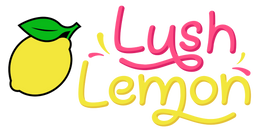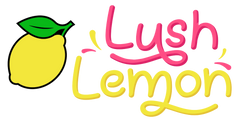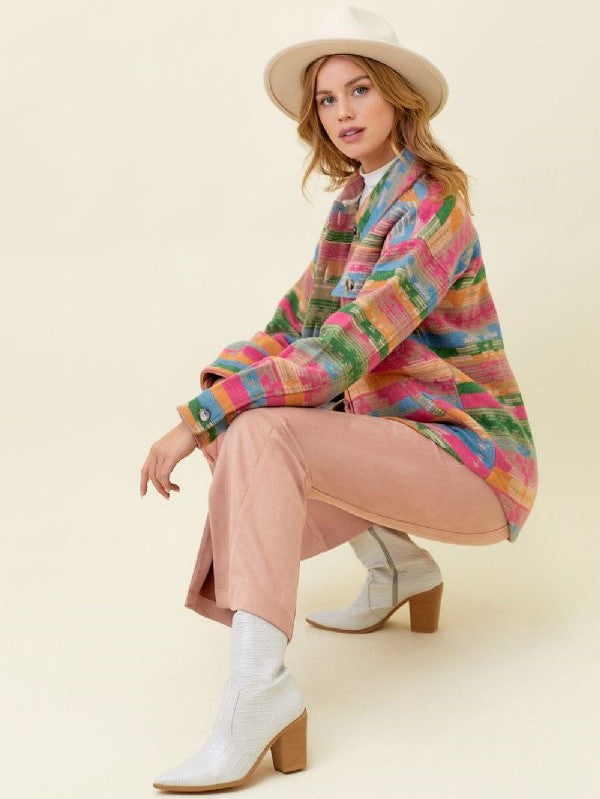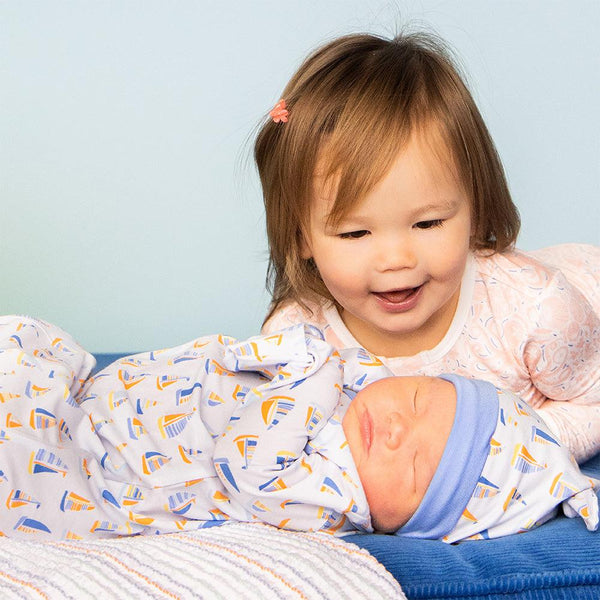The relationship between what we wear and how we feel extends far beyond simple aesthetics. Research in the field of enclothed cognition—the study of how clothing influences psychological processes—has demonstrated measurable effects of outfit choices on our confidence, cognitive performance, and social interactions. For college students navigating high-pressure academic environments, understanding this connection can provide a valuable tool for optimizing performance during presentations, exams, job interviews, and other pivotal moments.
The Science of Enclothed Cognition
The concept of enclothed cognition explains how our clothing choices influence our psychological processes and behavioral tendencies. This phenomenon isn't merely about looking good—it's about how specific garments can trigger mental associations that measurably affect our performance.
Research has shown that wearing clothes associated with specific qualities—like the attention to detail linked with a doctor's lab coat—can actually induce those same qualities in the wearer. For college students, this means thoughtfully selected outfits can potentially enhance focus during exams, confidence during presentations, or creativity during collaborative projects.
The Sleeveless Suit Mini Dress from Endless Rose represents a perfect example of performance-enhancing attire. Its structured silhouette and professional detailing create psychological associations with competence and authority, potentially boosting confidence during high-stakes presentations or interviews. The physical sensation of wearing more formal attire can trigger a more focused mental state appropriate for academic challenges.
Confidence Dressing: The Self-Perception Effect
The psychological concept of self-perception theory explains how we develop attitudes about ourselves partly by observing our own behavior—including our clothing choices. When we dress in ways that align with our goals, we often behave in ways that support those same goals.
The Embroidered Ruffle Tie Back Dress provides a perfect example of confidence-inducing design. Its distinctive details and flattering silhouette create a natural confidence boost that can influence your internal dialogue and external presentation. When wearing something that makes you feel positively about your appearance, you're more likely to approach challenging situations with optimism and resilience.
This confidence effect doesn't necessarily require traditionally "formal" clothing. The key is wearing items that make you personally feel more capable and prepared. For some students, the Ruffle Tiered Midi Dress might create more authentic confidence than more structured options. The psychological impact depends on your personal associations and comfort with different styles.
Preparedness Signaling: External and Internal Effects
Our clothing choices send signals not only to others but also to ourselves about our readiness for specific situations. This preparedness signaling affects both how others perceive us and how we perceive ourselves.
For academic presentations, the Floral V-Neck Top with Scallop Trim paired with structured bottoms signals preparation and attention to detail. This external signal influences how peers and professors perceive your work while simultaneously reinforcing your own internal sense of readiness for the challenge.
Importantly, this effect works even in virtual environments. During online presentations or interviews, strategic outfit choices like the Contrast Collar Knit Polo Mini Dress continue influencing your psychological state even when only visible from the shoulders up. The complete outfit affects your physical posture and mental focus regardless of what others can see.
Cognitive Load and Decision Fatigue
The mental energy required for decision-making is finite, and outfit decisions can consume surprising amounts of this limited resource. Strategic wardrobe planning can preserve cognitive resources for more important academic and social challenges.
Creating outfit formulas—like pairing the Textured Collared Pocket Dress with simple accessories for presentation days—reduces decision fatigue during high-pressure periods like finals week. This approach preserves mental energy for academic performance while still ensuring you present yourself effectively.
Many successful students develop specific "uniforms" for different academic contexts. Having designated "exam day" outfits—comfortable but put-together options like the Striped Rib Peasant Sleeve Top with well-fitted jeans—creates mental associations that support performance while eliminating decision stress on important days.
State-Dependent Learning and Performance
Psychological research on state-dependent learning demonstrates how environmental cues—including clothing—can trigger specific mental states that enhance recall and performance. This principle can be strategically applied to academic success.
Consider developing specific outfits associated with different academic activities. The Embroidered Puff Sleeve Pullover Top with Pleated Collar might become your "focused study" attire, while the Floral Embroidered Lace Top with Fringe Detail signals social or collaborative learning environments. These consistent associations strengthen the connection between your attire and optimal mental states for those activities.
For exam performance specifically, wearing something similar during both study sessions and the actual test can trigger recall through environmental consistency. If you've studied while wearing the Scallop Trim ¾ Sleeve Mini Dress, wearing it again during the exam may subtly enhance your ability to access that information through state-dependent memory effects.
Color Psychology in Academic Contexts
Different colors trigger distinct psychological and physiological responses, which can be strategically leveraged for specific academic scenarios.
Blue tones, like those found in the Santorini Coastal Sketch Short Dress, have been associated with enhanced creativity and reduced anxiety—potentially beneficial during brainstorming sessions or stressful exams. The calming effect of certain blues may help maintain focus without the agitation sometimes triggered by more stimulating colors.
For presentations or scenarios requiring energy and engagement, the vibrant tones of the Embroidered Ruffle Sleeve Ribbon Dress might provide psychological stimulation that enhances your dynamic presence. These energetic colors can influence both your own energy levels and how attentively others engage with your presentation.
Neutral tones found in pieces like the Contrast Satin Trim Mini Dress often project professionalism and credibility, making them particularly valuable for interview settings or formal academic presentations where authoritative presence matters more than energetic engagement.
Physical Comfort and Cognitive Performance
While psychological associations matter significantly, the physical comfort of your clothing directly impacts cognitive performance by affecting your ability to focus without distraction.
The 3/4 Sleeve Boatneck Doleman offers the professional appearance needed for academic settings while providing comfort that won't distract from cognitive tasks. This balance supports sustained focus during lengthy exams or presentations where physical discomfort might otherwise detract from performance.
Physical restriction from overly tight clothing can actually impair cognitive function by creating distracting discomfort and consuming attention resources. Even when seeking a more formal appearance, prioritize options like the Zip Front Drawstring Waist Mini Dress that provide sufficient movement freedom to support your physical and mental comfort during performance situations.
Temperature regulation also significantly impacts cognitive performance. Layering options like the Quilted Striped Band Knit Top allow adaptation to variable classroom temperatures, preventing the cognitive impairment associated with being too cold or too warm during important academic activities.
Identity Reinforcement Through Strategic Style
Our clothing choices both reflect and reinforce our sense of identity—including our academic and professional identities. Strategic selection can strengthen your self-concept as a capable student in specific disciplines.
For students in business-oriented programs, the structured elegance of the Half Zip Collared Ruffle Sleeve Dress reinforces professional identity while signaling seriousness to professors and potential employers. This identity reinforcement can subconsciously increase behaviors aligned with business professionalism, like thorough preparation and confident presentation.
Creative discipline students might find the Floral Embroidered Striped Color Block Top reinforces their identity as innovative thinkers. The pattern mixing and artistic details align with creative self-concept, potentially enhancing performance in tasks requiring imaginative thinking.
STEM students often balance practical functionality with professional presentation. The Striped Button-Up Ruffle Hem Mini Dress provides sufficient professionalism for laboratory environments while its practical construction supports the active movement often required in hands-on STEM settings.
Social Signal Optimization for Academic Environments
Beyond personal psychological effects, clothing choices influence how professors, peers, and potential employers perceive and interact with you. Understanding these social signals can strategically enhance your academic experience.
For professor interactions like office hours or research opportunities, pieces like the Luba Tencel Utility Romper signal serious academic intent while maintaining approachability. This balanced impression often encourages mentorship relationships that prove invaluable throughout your college career.
For peer collaboration settings, the Santorini Dreams Cami & Shorts Set projects both competence and approachability—essential qualities for effective group work. This balance helps establish your credibility while maintaining the social ease necessary for productive collaboration.
For teaching assistant or leadership roles, the Smocking Detailed Woven Shirt paired with structured bottoms signals authority balanced with accessibility. This combination helps establish the respect needed for leadership positions while maintaining the approachability necessary for effective peer education.
Ritualistic Dressing for Performance Optimization
Athletes often engage in specific pre-competition routines to optimize performance. This same principle can be applied to academic challenges through ritualistic dressing practices.
Developing a specific pre-exam routine—perhaps wearing the High Waist Angled Side Seam Detail Flare with a comfortable but presentable top—creates psychological preparation that signals to your brain it's time for focused performance. The consistency of this ritual becomes a performance trigger independent of the specific garments involved.
Similarly, having designated "presentation attire" like the Puff Sleeve Printed Tiered Midi Dress with Pockets creates a psychological boundary between preparation and performance modes. The act of changing into this outfit becomes a transition ritual that helps shift your mindset toward confident delivery.
For major academic milestones like thesis defenses or capstone presentations, new special-occasion pieces like the Aegean Garden Flutter Sleeve Dress can signal the significance of the event to both yourself and others. This physical representation of the moment's importance helps trigger the focused mental state needed for optimal performance.
Adaptive Style for Changing Academic Contexts
Different academic environments call for different psychological approaches, and your wardrobe can support these adaptations throughout your college experience.
For classroom settings focused on discussion participation, the Garden Reverie Maxi Dress projects both confidence and thoughtful engagement. Its polished yet approachable appearance supports the balanced self-presentation ideal for meaningful class contributions.
For high-stakes testing environments, comfortable yet put-together options like the Tie Dye Ruffle Sleeve Top with well-fitted jeans reduce distraction while maintaining the self-respect that supports confidence. This balance helps optimize cognitive resources for the challenge at hand.
For networking events and career fairs, pieces like the Print Satin Tiered Mini Dress paired with a structured top create memorable impression while maintaining professional credibility. This combination supports the confidence needed for effective professional connection-building.
Final Thoughts: Intentional Dressing as Academic Strategy
Understanding the psychological impact of your clothing choices transforms your wardrobe from a purely aesthetic consideration into a strategic tool for academic success. By thoughtfully selecting pieces that support your psychological needs in different academic contexts, you can optimize both your confidence and performance throughout your college career.
The Lush Lemon collection offers pieces across style categories that support this psychologically-informed approach to academic dressing. From structured interview options to comfortable-yet-presentable exam day attire, these thoughtfully designed items help you leverage the science of enclothed cognition for tangible academic benefits.
Visit Lush Lemon to explore their collection of performance-enhancing fashion that balances style with the psychological support needed for collegiate success. With strategic selection and intentional wearing, you'll navigate your academic challenges with both confidence and the cognitive advantages that come from understanding the psychology of style.





